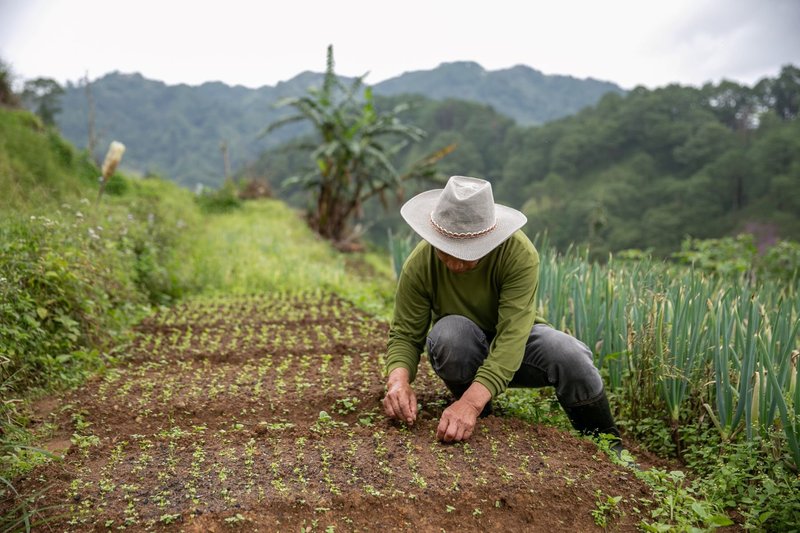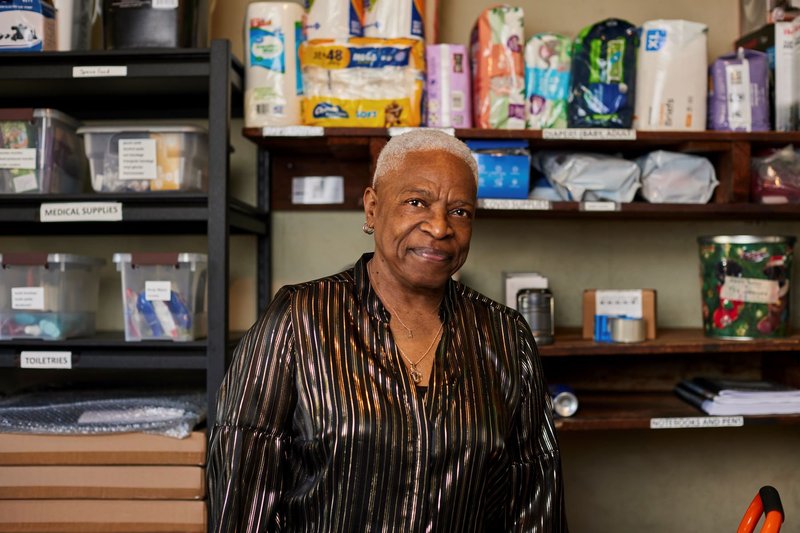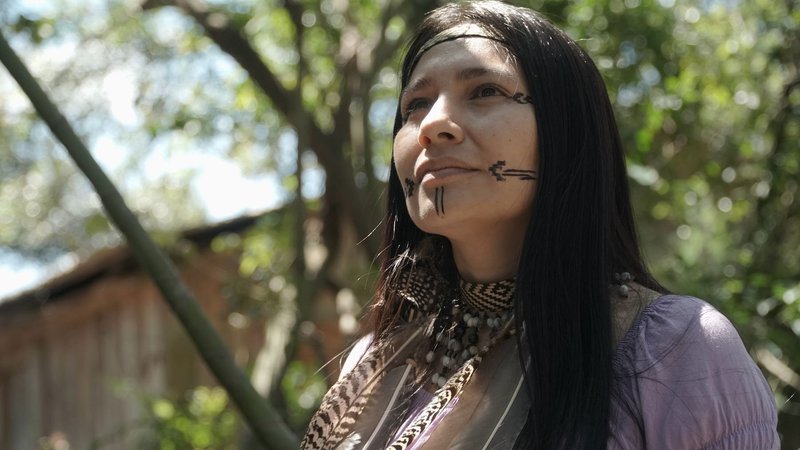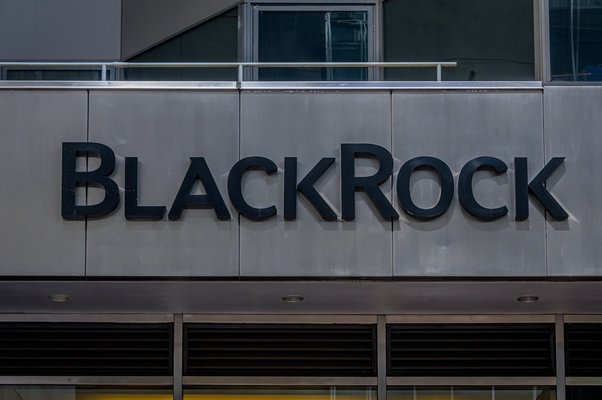As UN climate negotiations begin, a new Global Witness analysis shows that top oil and gas producers could pay for climate loss and damage in lower-income countries with their current profits. We share the stories of people around the world who have had to bear the cost instead

Joseph must now reckon with typhoons hitting his farmland in Benguet, the Philippines, with increasing regularity, decimating his crops and livelihood. Basilio Sepe
Will high-income countries pay their share to help the rest of the world survive the climate crisis? That question looms large over world leaders as they gather for the UN’s COP29 climate talks in Baku, Azerbaijan.
Two years ago, at COP27 in Egypt, countries set up a fund to respond to climate-related loss and damage, intended to support vulnerable developing countries already devastated by climate change. The initiative is meant to fund recovery from climate disasters.
This loss and damage fund is our most important tool to undo the horrific inequalities of the climate crisis.
Unfortunately, now two years old, the fund is still miniscule. Pledges from developed countries so far amount to a tiny fraction of the actual funds needed to repair climate-related damages each year – which one estimate puts at at least $400 billion every year.
Government pledges are not the only way to raise this money. New Global Witness research shows that the most profitable fossil companies claw in enough cash in production profits each year to cover those annual losses.
The 30 most profitable fossil fuel companies alone, excluding those from low-income countries, made $400 billion per year on average – exactly enough to cover the minimum loss and damage funds needed by climate-vulnerable Global Majority countries now.
Soon, this may no longer be true. Climate damages are projected to rise significantly as the crisis intensifies.
The numbers at stake are so large that they can feel meaningless on paper, so Global Witness spoke to people around the world – in Brazil, the Philippines, the UK and the US – to learn how they are already paying for climate loss and damage. They generously shared their stories with us.
Their testimonies make it clear: the time to make fossil fuel companies pay for their pollution is now.
Loss and damage is happening now
Medical bills from heatstroke. Losing crops to drought or flood. The trauma of losing one’s town to a catastrophic wildfire. These are all examples of what’s known as climate loss and damage.
The impact can be financial, measured in dollars or reaís, or it can be a kind of damage that can’t be measured in monetary terms. Either way, loss and damage is what happens when the climate crisis outstrips our ability to either prevent it or adapt to it.
In 2024, this damage is happening everywhere. The climate emergency, driven mostly by the burning of fossil fuels, is overcoming defences all over the planet.
Ordinary people are already paying for the climate crisis. Its costs are as varied as the human experience.
In Nepal and Central Europe, floods wiped whole communities off the map and killed hundreds just in September this year.

"Climate havoc" has left some American homes uninsurable, while others like Ms Doris Brown have been denied FEMA disaster assistance in the wake of hurricanes. Michael Starghill
Major drought conditions in 2023 and 2024 choked shipping through the Panama Canal, reducing countries’ GDPs by billions of dollars.
Wildfires and “climate havoc” have made some American communities uninsurable and driven other homeowners into state-backed insurance pools – whose losses are backed with public money.
Emotional pain and spiritual losses from the crisis, while harder to quantify, can be just as difficult to live through.
Google searches for “eco-anxiety” have soared in recent years. In 2020, six out of 10 people surveyed in Tuvalu, a Pacific Island nation, reported extreme psychological distress in response to climate change.
Biodiversity itself is in grave danger from global heating, with one in 10 species considered to be at very high risk of extinction if global heating reaches 2°C. The intrinsic value of biodiversity is incalculable.
Put this way, any distinction between economic and non-economic costs becomes meaningless.
$400 billion and rising
Even if we only count the economic costs, there is still a lot we do not know about the true magnitude of loss and damage.
Most countries have not yet been able to work out how much it will cost to respond to the climate crisis by, for instance, relocating whole communities or rebuilding after disasters.
An enormous factor in the climate crisis’s actual cost will be how quickly the world manages to quit burning fossil fuels.
But the partial numbers we do have suggest that loss and damage is already staggeringly expensive.
One expert study recently found that extreme weather that could be attributed to the climate emergency is costing the world $143 billion per year. That works out at $16 million every hour.
Pointing to major data gaps, one of the study’s authors described it as a “massive understatement”.
Other studies that look at global heating’s effect on GDP have put this number at somewhere between $116-435 billion in 2020, for only a subset of the world’s more vulnerable countries.
For our own research, Global Witness uses a figure agreed upon by researchers at the Loss and Damage Collective and Heinrich Böll Stiftung.
Recalculating widely used models with 2023 dollars, they estimate that the annual cost of climate loss and damage now could be $671 billion by 2030, and acknowledge that it will likely rise.
Unequal impact
Although this crisis is hitting everywhere, its effects are not felt equally. Historically racist and colonialist policies have ensured that women, Black, Asian and Indigenous communities, and many Global Majority countries that have historically emitted the lowest amount of greenhouse gases will be hit the worst by their climate-wrecking effects.
In the US, a Yale University study found that Hispanic and Latino adults were most likely to experience psychological distress from the climate emergency, with more than one in six experiencing some level of distress.
Countries are already spending billions they don’t have on climate costs.
A 2021 Christian Aid report found that even if the world is able to keep global heating to 1.5°C, vulnerable countries will lose an average of 33% of their GDP by 2100.
Sudan, which is responsible for a negligible amount of global CO2 emissions, faces the worst projected losses.
And the companies that caused this crisis are making trillions.
Fossil fuel profits
Burning oil, gas and coal is the single largest cause of climate change. Selling those fossil fuels has historically been extremely profitable.
That is thanks in part to the industry’s decades-long campaign of disinformation intended to mislead the public about the known dangers its products pose, even as climate impacts have accelerated.
Global Witness has found that in the nine years since the Paris Agreement was adopted in 2015, the top 30 oil and gas companies – even excluding those based in poorer countries – have recorded enough “free cash flow” (profits from production before corporate expenses like salaries and debt are paid) to pay for climate loss and damage all by themselves.
See our methodology beneath this article for details of our calculations.
Those 30 companies, which include oil majors BP, Chevron, Exxon, Shell and TotalEnergies, have together made an average of $400 billion per year – the same amount that researchers agree should be considered the minimum for loss and damage funding needed annually by developing countries.
Those same researchers also agree that, as the climate crisis intensifies, this number will quickly rise – climate damages could cost more than $600 billion every year by 2030.
This means that our window to meaningfully address the costs of climate loss and damage by taxing and redistributing fossil profits is narrow. The time to act is now.

We met people who are already living with climate-related loss and damage around the world, including Indigenous Brazilian, Luana Kaingang, whose community organised its own aid during recent floods. Estúdio Aluisio
Case studies: Climate loss and damage around the world
Global Witness interviewed people in Brazil, the Philippines, the UK and the US to understand how they are already paying for the climate crisis, and what they think should happen instead. These are their stories.
- Houston community responds to storms with mutual aid
- Flooding submerges farmland and vital harvests in the UK
- Fisherfolk traditions and livelihoods in the Philippines threatened by typhoons
- Indigenous Brazilians call for direct loss and damage funding
The loss and damage fund
Originally proposed in a different form by Vanuatu in 1991, a mechanism for paying for climate loss and damage was finally agreed upon at COP27.
The Fund for Responding to Loss and Damage exists because of the vocal efforts of a coalition of lower-income countries who are most at risk from the climate crisis.
Although the hard-won fund represents significant progress toward climate justice, major questions remain about its design and function.
The fund does not require wealthy nations to pay in, for instance, instead making contributions voluntary.
With no legal mechanism compelling payments, the US, which is the world’s historically highest emitting country, has pledged a mere US$17.5 million.
It remains to be seen whether, and how quickly, climate-vulnerable countries will be able to directly access the funds they need at the necessary speed.
And this brings us to another critical problem with the fund: there is not nearly enough money.
As of October this year, high-income countries have pledged a mere $702 million to the fund. That is less than one-hundredth of what the world will need every year.
Where else could the money to pay for the climate crisis be found? One possible source: the companies that caused it.
Read our explainer on the Loss and Damage Fund and how it could serve climate justice
Polluters must pay
One approach to making this happen could be a “Climate Damages Tax” (CDT) that would levy a fee on the extraction of fossil fuels.
This proposal would generate funds that could be used to support a just transition and loss and damage costs at home, while – for wealthier countries – also producing revenue to help fund the UN loss and damage fund.
The benefits of this proposal, backed by over 100 organisations, include its ethical clarity, the use of existing tax and revenue collection systems, and countries’ ability to adjust how much tax they dedicate to domestic climate needs.
A CDT by itself would not generate enough money to pay climate loss and damage costs. There will also be questions about the political feasibility of taxing fossil companies – though as climate damage mounts, this idea may become more palatable.
Still, a CDT is not the only way to force fossil fuel companies to pay for the damage they have caused.
Several US states, including New York, California and Vermont, have recently introduced bills to create climate superfunds.
These pots of money would be filled by contributions from fossil fuel producers and refiners that are active within these states to invest in
And Democrats introduced a Polluters Pay Climate Fund Act to Congress in September 2024. This Act would force major fossil fuel producers to contribute annual fees to a $1 trillion fund over a decade, in proportion to their share of emissions in the US over a given period.
The income would be invested in climate projects across the US, including to cover loss and damage costs, with 40% of the funds reserved for environmental justice communities.

"In agriculture, there is always a polluter pays principle," UK farmer Colin Chappell tells us. A Climate Damages Tax could raise funds from a levy on fossil fuels extraction. Glenn Perry / Global Witness
Whatever approaches countries take, the same principle should underpin them. The companies that caused this crisis are responsible for paying to fix it. Ordinary people are not.
Global Witness asked BP, Chevron, Exxon, Shell and TotalEnergies for their responses to this article. BP, Chevron and Exxon did not respond.
A Shell spokesperson said the company would not comment, but that it also did not recognise Global Witness’s conclusions.
TotalEnergies responded that this article seems to be taking a one-sided approach on the fundamental issues of access to energy, development and climate change.
The company said that the energy system predominantly consists of fossil fuels and has been driving modern development for 150 years.
It stated this has greatly benefitted economies and societies at large (including states, companies and citizens).
TotalEnergies also noted the energy system “needs to be oriented towards less carbon intensive products as part of the energy transition.”
It added that its strategy “aims at providing more affordable, more reliable and cleaner energy to developing economies namely, while very concretely contributing to the advancement of the energy transition,” referring to its 2024 Sustainability & Climate report.
Our recommendations
Wealthy countries should:
- Review measures, such as a Climate Damages Tax that would generate funds for climate loss and damage and a just green energy transition, by requiring the fossil fuel industry to contribute
- Explore other legally binding frameworks, such as climate litigation, which can hold the fossil fuel industry financially accountable for its contributions to the climate crisis
- Significantly step up overall commitments to the loss and damage fund to better respond to the projected costs of climate loss and damage in developing countries, estimated require $400 billion annually as a minimum
- Agree on a strong New Collective Quantified Goal on Climate Finance with a dedicated pillar for loss and damage. Climate finance should include primarily grants and grant-equivalents, and not burden indebted countries further. All climate finance needs to happen under the principles of climate justice. Access for local and humanitarian organizations, that work at the forefront of the climate crises, needs to be ensured.
- Work to avert further climate breakdown by:
- Ending subsidies for fossil fuel companies and redirecting those funds towards renewable energy deployment and climate adaptation programs that directly benefit vulnerable communities both domestically and internationally
- Accelerating a just transition to zero-carbon economies
All countries should:
- Ensure vulnerable and affected communities are part of the decision-making process when designing and implementing adaptation and compensation programmes
- Increase investment in early warning systems, climate-resilient infrastructure, and community-based adaptation programs to mitigate future losses
The Fund for Responding to Climate Loss and Damage should:
- Ensure that governments can apply for direct assistance from the fund
- Be targeted towards vulnerable communities and countries
- Be distributed with urgency to reach vulnerable communities promptly
- Provide grants, not loans, which avoid saddling countries with further debt and incorporate debt forgiveness
- Give land and environmental defenders, including Indigenous Peoples, and vulnerable communities a meaningful seat at the negotiating table
Methodology: Calculating Big Oil’s cash flow
Free cash flow data was sourced from energy business intelligence agency Rystad Energy’s UCube database. Rystad’s data is widely referenced by major oil and gas companies, the media, and international bodies such as the International Energy Agency.
Rystad data is based on sources including company reporting and policies, government sources and policies, energy service reporting, energy agencies and academic research and news articles. Where reported data is unavailable, such as the remaining months of 2024, data is modelled based on the above sources and supported by a comprehensive database of global oil and gas fields.
Rystad’s UCube is a database of the global upstream oil and gas market that allows users to query the production and economics of the upstream oil and gas industry. Upstream refers to the exploration and extraction of oil and gas.
Upstream profit, or free cash flow, is revenue flowing from oil and gas projects to these companies after taxes and royalties, capital expenditure and operating expenditure. Debt service or other corporate costs, e.g. executive salaries, have not been extracted from these revenues. This free cash flow is therefore the profit derived at the project level from selling oil and gas produced before corporate expenses have been paid.
The Paris Agreement was adopted at the end of 2015. We therefore included data for the period 2016-2024 (full year). This analysis was run in September 2024 and includes Rystad’s projections, based on the above sources, of free cash flow for the remaining months of this year.
Adapting the approach of Grasso and Heede in their 2023 analysis, we exclude several companies from lower or lower-middle income countries (according to current World Bank classifications) from our list of top 30 fossil companies, in acknowledgement of these countries’ much smaller contributions, and greater vulnerability, to the climate crisis.


